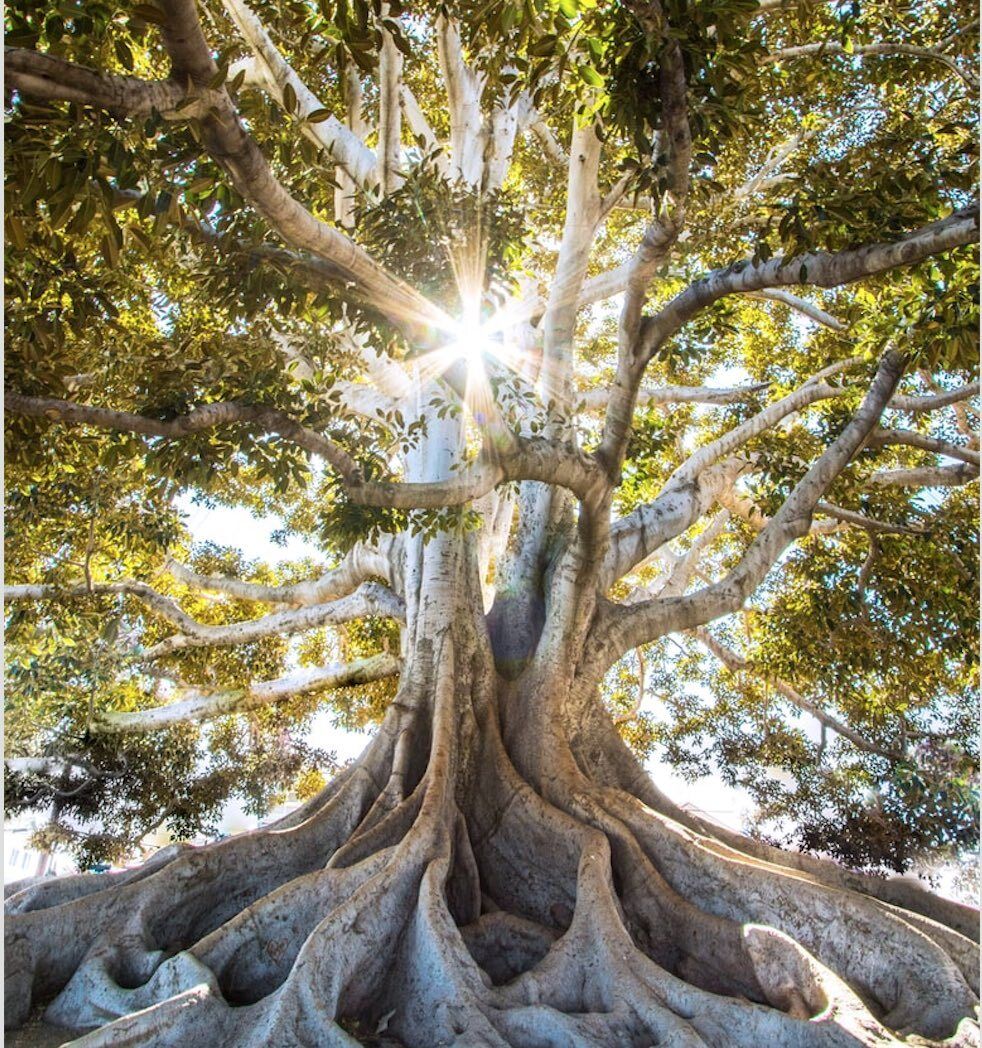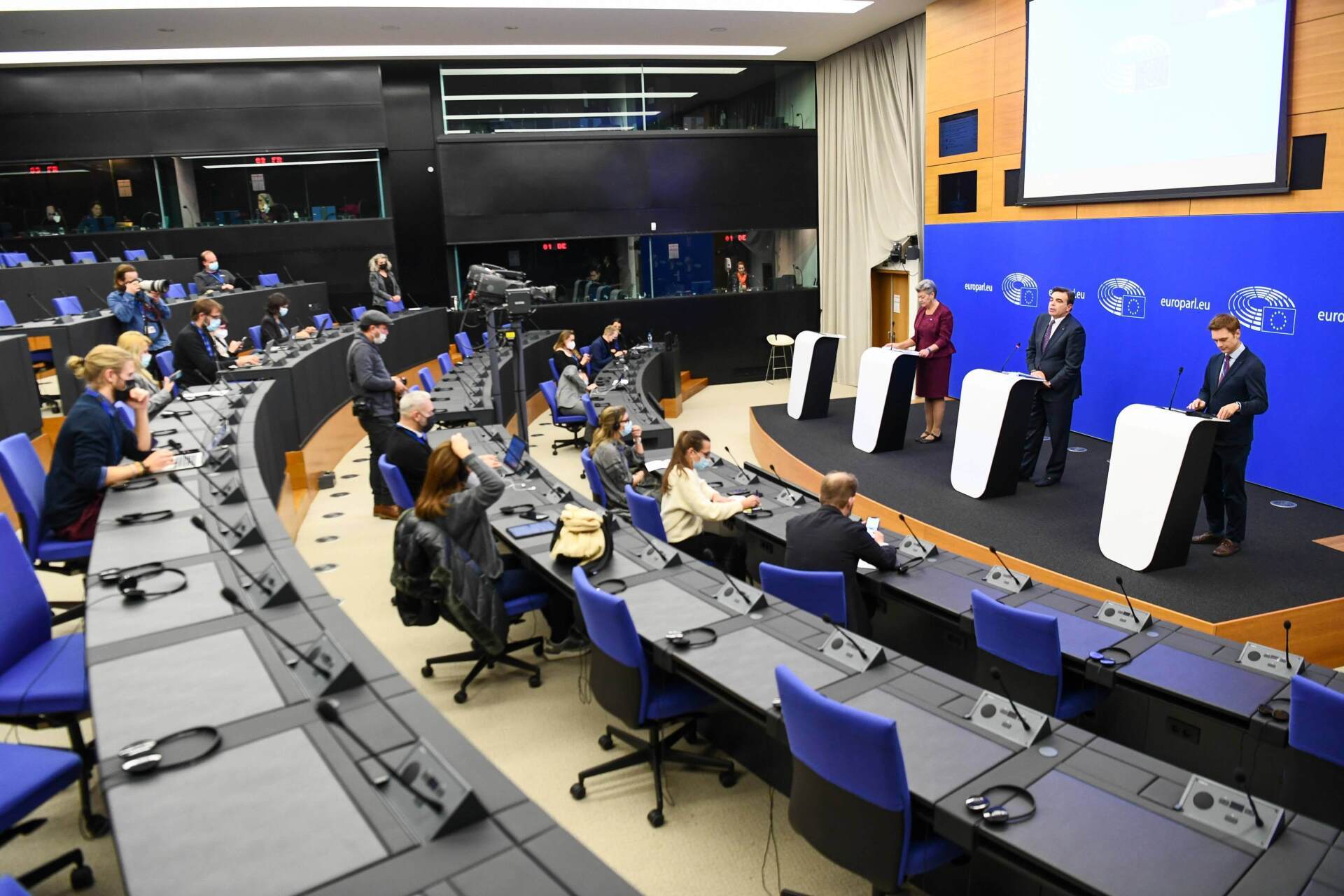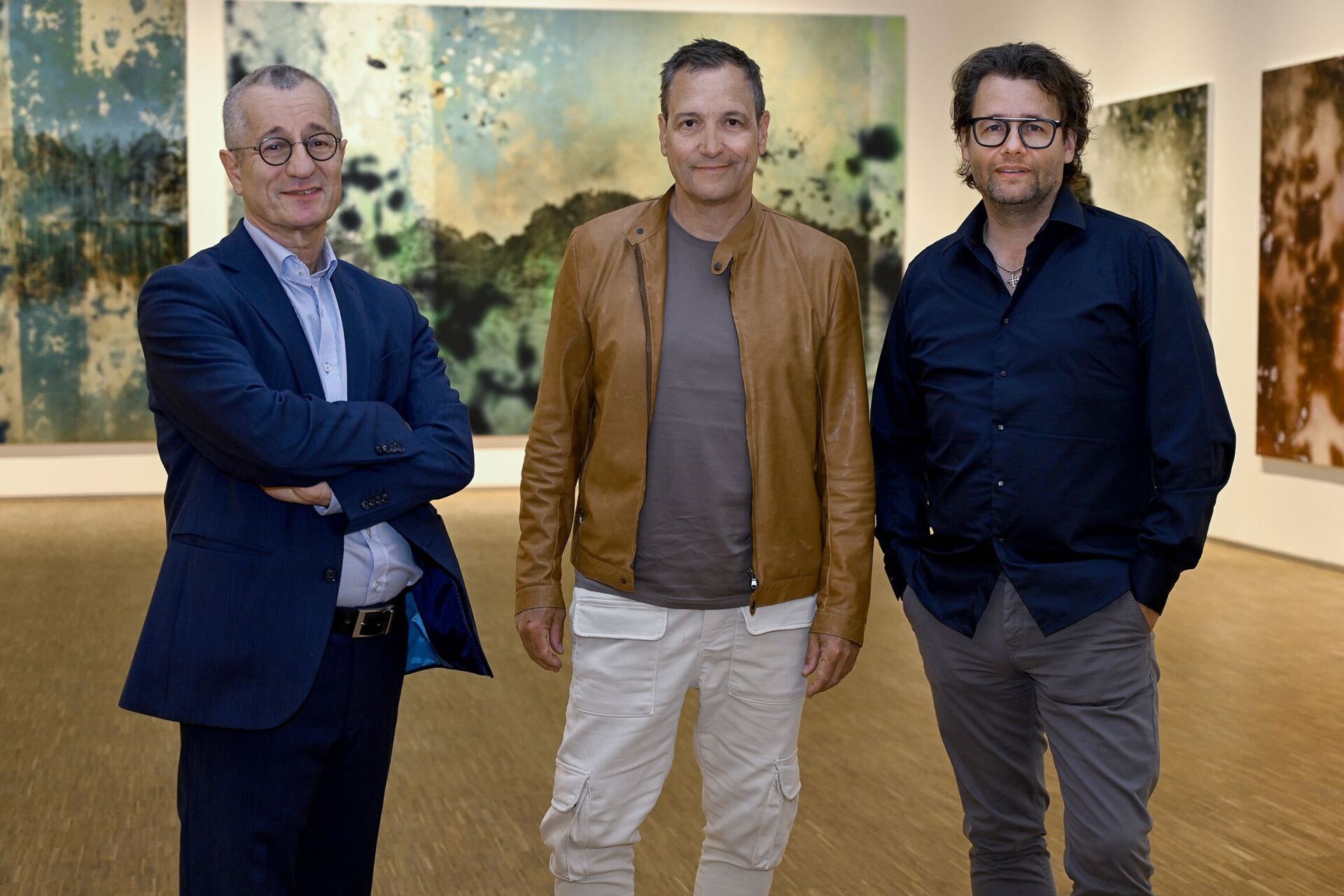Enviroment & Art - 17 May 2022
The New European Bauhaus
"Sustainability is something beautiful and comprehensive"
Artists and cultural practitioners are key to the realisation of the New European Bauhaus (NEB)
An open project for creative people!
An interview with Adalbert Jahnz, spokesperson for environment, maritime affairs and fisheries, transport, and New European Bauhaus
The very latest: The European Bauhaus Prize 2022 will be awarded on 11 June in Brussels.

The New European Bauhaus (NEB) initiative was launched by the President of the European Commission, Ursula von der Leyen, in September 2020. The NEB, based in Brussels, is a creative interdisciplinary initiative to make the European Green Deal a reality in daily life and living spaces. Ongoing calls are launched and projects are sought - most recently, the European Bauhaus Prizes 2022 will be awarded on 11 June in Brussels. The projects were chosen in a public vote in which 5689 people from all over the world voted.
The founders of the New European Bauhaus saw the need for a transformative movement to reduce the carbon footprint not only of the environment but also of lifestyle products. NEB is to become a holistic approach that incorporates art, design and society. The three pillars of NEB are said to be sustainability, aesthetics and inclusion.
But why was the name Bauhaus chosen if one wants to create something new, why is one oriented towards old values and which projects are being promoted?
The creators of the initiative were guided by the historic Bauhaus, which initiated a worldwide design movement through the combination of art and craft "form follows function", which was to change the living spaces of all people.
The NEB is an open project and architects, designers and artists are invited to participate. For the founders of the NEB, artists and cultural practitioners are key to bringing about a change in behaviour and values and bringing people together.
To the interview:

Adalbert Jahnz
©European Union, 2020
Alethea&Art Magazine: Why did you choose the term Bauhaus and what does it mean about the project?
Adalbert Jahnz: The New European Bauhaus is first of all new and European—the historic Bauhaus is not our model, but a source of inspiration. It proved that industry and good design can improve the daily life of millions of people.In the same way, the New European Bauhaus aims to be more than just a school of architecture that uses new technologies and techniques. Like the historic Bauhaus that spread around the world from Weimar, it aims to build bridges: to the social challenges of the time, to the world of art and culture, and between cultures.
Just as the Bauhaus was an expression of a new way of thinking that corresponded to a new reality, so the New European Bauhaus aims to be a fresh, innovative way of thinking about the world and our role in it. It wants to be a change of mindset. With the immense challenge of climate change and environmental degradation that we are facing, the New European Bauhaus is inviting us to think about sustainability as something that can be both beautiful and inclusive. We are working at various levels, not only in architecture, urban planning, and infrastructure, but also in the fields of culture, education, and politics. Finally, the historic Bauhaus used and experienced working with new materials back then, steel and concrete. The New European Bauhaus is aspiring at doing the same, with wood and decarbonised steel.
Alethea&Art Magazine: Is the New European Bauhaus a further development of the Davos Declaration?
Adalbert Jahnz: The Davos Baukultur is a major contribution to the New European Bauhaus initiative and vice versa; it fits and feeds into it. Just as the Davos Baukultur quality system published in May 2021, the New European Bauhaus also stresses that the quality criteria for living space and design should not only be functional, ecological, or economic, but should also address social, cultural, and psychological needs and give a general sense of belonging.
Alethea&Art Magazine: What do you see as the values of the Bauhaus that are to be carried into our time?
Adalbert Jahnz: The main link of the new initiative to the historical Bauhaus is the need for a new transformative movement adapted to the challenges of our time. 100 years ago, starting with the union of the arts and craft, the historical Bauhaus coined the motto “form follows function”, which triggered a global design movement that transformed our living spaces.
Today, we are again in need of a transformative movement to reduce the carbon footprints of our living spaces and lifestyle products and to support this transformation in an inclusive and culturally meaningful way. This transformative movement needs to engage many disciplines of arts, design and society. This multidisciplinary approach is part of what inspires us from the historic Bauhaus as well as the “think and do” approach, and the importance of conversations and debates.
Alethea&Art Magazine: What should sustainability and aesthetics of the projects mean in concrete terms?
Adalbert Jahnz: The three pillars of the NEB are sustainability, aesthetics, and inclusion. In other words: the aim is to bring ecology and architectural quality under one roof, without focusing only on beauty or only on kilowatt-hours.Inclusion means going beyond accessibility by co-creating with the users. The point is that the living spaces should not serve the taste of the architect, but the needs and lives of people. We are currently working on a ‘compass’ that will go into more detail on each of the three dimensions, and based on this we will create specific tools to assess how well a project is doing on each of the three. That will allow us to look in a very tangible and structured way at very different items, from buildings to clothes, and see how they contribute to the NEB’s values.

Press conference by Margaritis Schinas, Vice-President of the European Commission, and Ylva Johansson, European Commissioner, on the revision of the Schengen Borders Code - ©European Union, 2021
Alethea&Art Magazine: Are you only interested in architecture, or should other disciplines also be promoted?
Adalbert Jahnz: At the heart of our project is the recognition that architecture cannot be separated from broader culture, society and technology. As Commission President, Ursula von der Leyen, said: "The New European Bauhaus is a project of hope to explore how we live better together after the pandemic. It is about matching sustainability with style, to bring the European Green Deal closer to people's minds and homes. We need all creative minds: designers, artists, scientists, architects, and citizens, to make the New European Bauhaus a success.” We want to break down boundaries to allow design to find solutions for everyday problems. We are starting with looking at the built environment: through architecture, but also broader questions such as urban planning or mobility—all of which need to bring in solid thinking about social and environmental issues, too. And our ambition goes further, to cover all the material aspects of our daily life. We already have products looking at sustainable and inclusive fashion, and have many ideas for the future. Furniture could be another clear target.
Alethea&Art Magazine: In concrete terms, does it mean that you promote projects from the very beginning or publish projects that have already been realised on your website?
Adalbert Jahnz: Both are possible. In the early stages of the initiative, the focus was mainly on projects that already existed, which embodied the values of the New European Bauhaus in exemplary ways. Since the initiative moved into the delivery phase in mid-2021, several calls have been published that seek to promote and support projects in the spirit of the New European Bauhaus from the initial stages.
A prominent example is the call for New European Bauhaus lighthouse demonstrators. Five projects were selected and will receive funding of about €5 million each to implement their plans in 11 Member States(Belgium, Czechia, Germany, Denmark, Greece, Croatia, Italy, Latvia, Netherlands, Slovenia, and Portugal), as well as in Norway and Turkey.One of the five selected projects calls itself DESIRE (Designing the Irresistible Circular Society). It wants to tackle the major challenges faced by societies and cities: climate change, biodiversity loss and resource challenges. Based on three main themes of inclusivity, circularity and reconciling cities with nature, the project will use art, architecture, and design to explore alternative ways of transforming territories across different European cities in Denmark, the Netherlands, Slovenia, Italy, and Latvia. You will be able to see results in the next two years.
Alethea&Art Magazine: Which projects have you achieved so far that best represent the philosophy of the New European Bauhaus?
Adalbert Jahnz: Allow me to reply by inviting you to tune in for the announcement of the 2022 New European Bauhaus Prizes, at the NEB Festival on 9-12 June, in Brussels. You can already discover shortlisted projects on our webpage, and we have some really inspiring submissions.
At the Commission, we also believe we have the responsibility to lead by example. Another interesting project is an international architectural competition that we launched to define the future permanent site of the Commission’s Joint Research Centre in Seville. The competition explicitly sought concept designs inspired by the New European Bauhaus. In April 2022, the contract was awarded and construction works should start in 2024. The new JRC site will be one excellent example for a project conceived from the very beginning according to the New European Bauhaus values and principles. Moreover, this project also shows that the Commission is leading by example.
Alethea&Art Magazine: How can one concretely submit one's project?
Adalbert Jahnz: There are various ways to get involved in the New European Bauhaus. There are several funding opportunities for projects covering different target groups. It is also possible to apply for the prizes, become a partner(open to non-profit organisations) or a friend (open to businesses and public authorities). Becoming a partner or friend also opens up the possibility to become involved in the NEB Lab, where teams made up of partners, friends, and other members of the New European Bauhaus community self-organise to develop projects with the potential to achieve tangible change in a specific place or context. If you have a look at the New European Bauhaus website, you are certain to find some way to get involved or events that may interest you, whatever your discipline and wherever you are in Europe. (Link here.)
Alethea&Art Magazine: What can art and culture contribute to realising the Green Deal?
Adalbert Jahnz: The Green Deal is a transformative project, not only for our economy but also for our way of life. It will take a lot of engagement and change to move towards an economy that gives back to nature rather than taking from it. We all need to find a sense of purpose and belonging in this transformation. So as policymakers, we cannot underestimate the role of artists and cultural professionals, cultural heritage, and creative industries. They are key to inspiring shift in behaviours and values, and to bringing people together. And when it comes to transforming our physical environment, circular and sustainable design, and architecture with, for example, intelligent restoration and adaptation of heritage buildings, can bring economic and social dynamism to the local level, while reducing unsustainable urban sprawl.
Alethea&Art Magazine: Mr. Jahnz, thank you very much for the interview.
Learn about the prize:
http://prizes.new-european-bauhaus.eu/
The interview was conducted by C. Mauer
ALETHEA & ART MAGAZINE recommends:
17 May 2022

Art - 1 Mai 2022
HA Schult Wall of Freedom -
Freedom in the words of Drew Hammond
HA Schult’s Wall of Freedom is on permanent view at AQ 7, a division of the Andreas Quartier at the junction of Neubrückstrasse and Ratingerstrasse. Freiheit in den Worten von Drew Hammond.
HA Schult 's Wall of Freedom in Düsseldorf
©Ansgar van Treeck

Business - 12 May 2022
Sustainability or circularity?
The Center for Circular Economy at RWTH Aachen University opens its doors. Companies, designers even influencers - all refer to sustainability. Sustainability is the key concept for successful market establishment. But just as important as sustainability is circularity. Circularity even replaces previous sustainability strategies. This is the thesis of Mohammad Chehadé. So get to know the newly formed Center for Circular Economy at RWTH Aachen University. In the first episode, Alethea Magazine meets Mohammad Chehadé, the Executive Director since July 2021.
©Center for Circular Economy at RWTH Aachen University

Art / Personalities - 8 Mai 2022
Dr Tayfun Belgin, the museum director of the Osthaus Hagen talked about his plans for the Osthaus Hagen on the occasion of the opening of Von Fernen umgeben, the new series of paintings by Dieter Nuhr. The museum has been in the media lately because of star artists like Sylvester Stallone, Bryan Adams and now Dieter Nuhr - but Dr Belgin is also known for his new discoveries. And - what is actually the key to success for a museum director?
From left: Dr Tayfun Belgin, Dieter Nuhr, Dirk Geuer
©Geuer & Geuer


